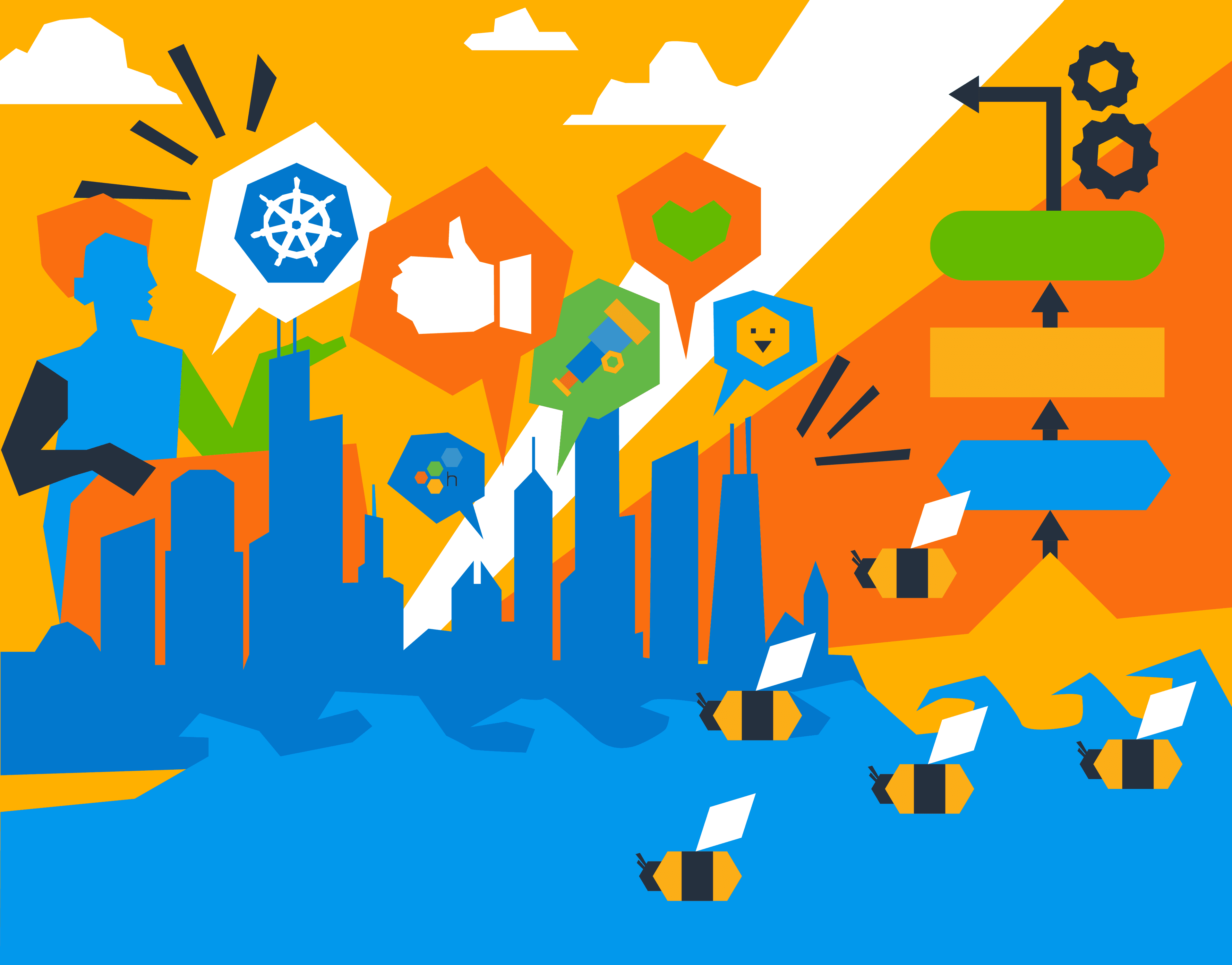AI’s Impact on Cloud-Native at KubeCon 2023
Cloud-native developers and practitioners gathered from around the world to learn, collaborate, and network at KubeCon/CloudNativeCon North America 2023 between November 6th and 9th at McCormick Place in Chicago, IL—myself included. This wasn’t my first time attending—I’ve been coming to KubeCon since 2016—but it was easily one of the most exciting experiences I’ve had as part of the cloud-native community.

By: Austin Parker

This article was originally published on Spiceworks.
Cloud-native developers and practitioners gathered from around the world to learn, collaborate, and network at KubeCon/CloudNativeCon North America 2023 between November 6th and 9th at McCormick Place in Chicago, IL—myself included. This wasn’t my first time attending—I’ve been coming to KubeCon since 2016—but it was easily one of the most exciting experiences I’ve had as part of the Cloud Native community.
Every KubeCon allows us to reflect on our past and prepare to build for the future. Compared to past events, it’s most remarkable to see the continued growth of the cloud-native ecosystem. With over 170 projects and over 219k contributors, the breadth of the community continues to impress.
This year’s KubeCon welcomed thousands of contributors and end-users to the Windy City, and many weren’t there primarily for Kubernetes. While the flagship project of the CNCF certainly maintains its dominance at the center of the event, there’s a remarkable amount of activity around projects like Argo CD, OpenTelemetry, Crossplane, Backstage, and more. Truly, the biggest difference between this year and prior ones is how much energy and attention there was around these platform projects—cloud-native is about a lot more than just container orchestration. It touches the entire end-to-end software delivery and observability lifecycle.
The event’s theme was ‘Architecting the Future,’ and the future was on everyone’s mind—and so was AI, with many sessions discussing how Kubernetes and cloud-native projects were used to build infrastructure for training machine learning and large language models. The inaugural AI Hub was launched, bringing together ML researchers, infrastructure experts, and other interested parties to share experiences about this innovative and evolving topic.
It’s all about community
Beyond these AI sessions, though, I found the most interesting and rewarding part of the event the Contribfest. These sessions allow project maintainers to introduce new contributors to their projects and get hands-on time mentoring new contributors to fix bugs, add new features, and get started on their journey to becoming full-fledged project contributors. These sessions are especially impactful to me as a project maintainer, and it’s always a delight to help people make their first (of hopefully many!) contributions to open-source software.
The power of observability
I’m still trying to process everything I’ve learned over the past few days, but I have a few takeaways. If it wasn’t already obvious, cloud-native isn’t just the industry’s future; it’s the present. Kubernetes and the Cloud Native software ecosystem are the solutions of choice for large and small organizations—from planet-scale enterprises like Spotify, recognized as the top end user for 2023, all the way to small and nimble startups and everyone in between.
It’s not just Kubernetes, though—the cloud-native ecosystem transforms everything from continuous integration and delivery to observability. OpenTelemetry, a standard for software telemetry like metrics and logs, has become the de facto standard throughout the ecosystem for monitoring and observability. Backstage is leading a revolution in how platform engineering teams create developer portals for teams. However, enterprises and startups aren’t just implementing these new technologies—high-performance computing, academic research computing, and highly-sensitive and regulated industries are also adopting cloud-native.
AI continues to drive transformation
The second big takeaway from KubeCon is that AI is powering an incredible transformation across the entire software industry. Artificial intelligence is driving incredible efficiency and innovation in the management and observability of software systems through automated detection of incidents and faults.
It’s empowering human operators to ask better questions about their software systems. It’s aiding developers write code more quickly and more securely. It provides powerful insights into resource utilization and empowers teams to better understand the cost and impact of changes in their systems.
Sustainability is on the rise
Finally, KubeCon demonstrated the continued demand for a deeper and richer understanding and observability of our systems. This isn’t just about understanding the performance of our systems, though. Projects like OpenCost provide real-time financial data about cloud spending to help organizations become more financially sustainable.
In addition, projects like Kepler assist organizations to monitor their power consumption to drive environmentally sustainable computing. Over the coming years, financial and environmental sustainability will become more critical than ever—cloud-native will lead the way.
Embracing the human element
Ultimately, KubeCon is a reminder that cloud-native is more than just Kubernetes; it’s more than the code and our contributions—the humans come together to build this software for the world. Leaving the event, I’m going to most fondly remember seeing people I’ve traveled around the world with over the years and all the people who were here for the first time.
After all, we were all first-time attendees at one point. The people we meet along the way keep us coming back.
Want to know more?
Talk to our team to arrange a custom demo or for help finding the right plan.